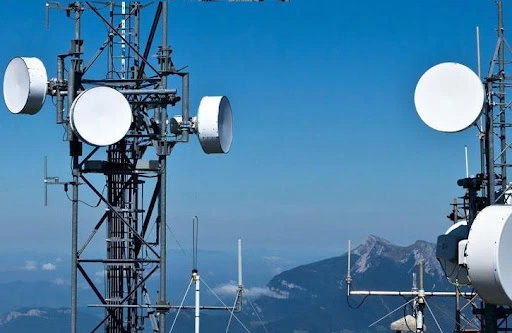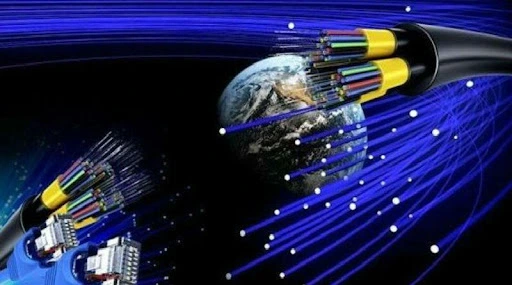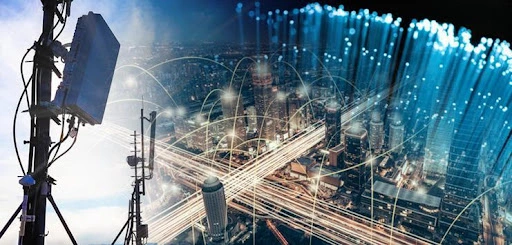We live in a technologically advanced era where high-speed internet forms the backbone of daily operations and business. Businesses, online stores, and companies heavily rely on the internet for their functioning. Here, a fiber optic internet can prove to be helpful in offering high-quality, reliable, and fast internet to suit businesses’ daily needs.
Broadband internet provides higher speeds for upload and download than other forms of internet connection. According to the Cisco Annual Internet Report, there will be around 5.3 billion total internet users as of 2023. This is an increase of 3.9 billion in 2018. This highlights the significance of fiber connectivity. Let us explore how fiber rollout services can make network connections more efficient and reliable.

Image Credit : images.unsplash.com – Connectivity
Contents
Fiber and its massive influence
Internet connectivity through fiber has its own advantages but requires a robust physical system of fiber rollout services to keep all connections on the network. Therefore, proper infrastructure is needed to keep the physical systems intact and provide billions of users with the best possible experience.
A robust infrastructure is necessary for businesses to connect to the internet. However, an area has to be serviced by fiber optic connected internet to provide these facilities. This will require the strengthening of the long-haul fiber networks that connect servers and data centers to one another all over the world.
Converging fiber and wireless networks

Image Credit : miro.medium.com – Networks
In our country, most connectivity has been in the form of mobile networks. It has little in common with the fixed-line fiber network. However, as more consumers meet their basic voice and data needs with smartphones, there has been a drastic rise in data volumes.
As the demand to transmit more data at fast speeds around the core mobile network accelerates, mobile technologies must be more efficient to meet these needs. This means to find a handy solution to this issue, the mobile network’s core has to be made of fixed lines, generally in the form of fiber connections.
Need for fiber networks

Image Credit : jasnet.in – Fiber network
Fiber and wireless networks go hand in hand. However, wireless networks have a limited capacity for mobile communication and data transmission over the electromagnetic spectrum, even if they are technically a suitable medium.
Telecom and fiber operators have taken up major infrastructure projects in the form of fiber rollout services over the last few years. With LTE (long-term evolution) technology prevailing over other technologies today, higher-speed service to consumers has become possible. The line rates may be high, but customers get good reception even in a fast-moving vehicle.
5G poses a significant connectivity issue. With an increase in bandwidth, the coverage area of an individual cell decreases. It brings forth the need to have more masts or towers. This brings forth the need for optical fiber.
As the network traffic increases, the masts cannot efficiently relay to destination cells using wireless technology. In simple terms, with an increase in the mast numbers, more cable connectivity is required, as more cable routes are needed.
Meeting capacity growth needs

Image Credit : dl.cdn-anritsu.com – Growth needs
Assessing the need for backhauling mobile data over fiber networks is essential. Growth rates of mobile data have been increasing. Doing simple calculations of at least one mobile connection per person, the capacity needs are sure to peak. As a result, mobile operators will extensively use advanced fiber build and deployment programs.
In the typical sense, there has been a lack of resources, awareness, and reluctance to build dedicated fiber networks. However, the ever-increasing expansion of mobile is linked to fiber. Essentially, this will accelerate fixed mobile convergence, and the impetus will shift to fixed-line fiber for data transmission.
A majority of our population needs access to fixed broadband with even the minimum upload and download speeds. But the use of fiber optics technology in connecting networks is all set to change this with fiber rollout services.
How connectivity through a fiber-optic network can build more efficient connections
Image Credit : img.freepik.com – Efficient connections
High connection speeds for multiple users
Fiber has the full potential to improve communication and connectivity with its advanced technology. One can rely on fiber to provide high connection speeds, even in the case of multiple users. In addition, fiber improves bandwidth, cloud connectivity, and VoIP capabilities in a network to improve both the networking aspect as well as productivity.
Convenient cloud connectivity
With more and more businesses shifting to the cloud, this type of connectivity has completely transformed how companies operate. It gives you the facility to store all your operational data in one virtual data center, which can be easily accessed anytime and anywhere by an authorized user.
Today, fiber cables are used to connect cloud data centers and cloud servers. As a result, these cables constitute a vital data transmission media in the cloud computing architecture.
Faster speeds
Fiber optic cables provide more bandwidth compared to copper cables. With high bandwidth, you can easily meet your data transmission needs along with faster speeds. In addition, fiber internet can make slow internet a thing of the past.
More security
Fiber optic cables are highly secure as it is challenging to tap into the wiring. Even if the cables break at some point, alarm systems can be set for physical monitoring. In addition, optical fibers provide advanced encryption strategies like optical encryption and optical steganography.
Greater transmission distances
Fiber optic cables are much better and more efficient in data transmission over long distances than copper cables. They are also much more durable and sturdy, with a lower risk of damage than traditional copper cables. Reliable connectivity is a crucial networking requirement, and fiber cables provide this advantage.
Wrapping up
A fiber optics network can significantly revolutionize your business’s networking. Companies can plan to expand their network with fiber rollout services seamlessly. They can achieve faster and greater data speeds and data transmission over much longer distances. The optical fiber cable development and utilization make its application more crucial in all walks of life. It has become the core technical support for network construction in recent times.
Bringing fiber optic networks to consumers will enable high efficiency, incredible speeds, and productivity. Fiber networks offer a worthwhile investment in a future-proof network that supports growth and innovation for creating digitally advanced economies.
FAQs
Q1. What makes fiber cables so reliable for connecting networks?
Fibre optic cables carry signals in the form of light pulses and do not conduct electrical currents. This makes fiber data connections totally resist electromagnetic interference or radio signals. They are also not influenced by lightning and harsh weather conditions.
Q2. What advantages does fiber provide over copper cables?
Copper cables are made of metal, are heavier, and are more prone to damage, corrosion, and network transmission issues. Fibre optic cables are thinner, lightweight, and can even withstand more pull pressure than copper. Fibre is flexible, corrosion-free, and can bend easily, making them less susceptible to damage.
Q3. How does fiber provide low latency in network communication?
Fiber cables deal with the transmission of light signals. The refractive index of fiber slows down the speed of light in the cable by 1.5 times more than in a vacuum. This speed reduction increases the latency to about 5 µsec/km, which is necessary for ideal performance. If all possible sources of latency were removed, this is the lower limit of latency that can be practically achieved.
Q4. Why does fiber have higher bandwidth?
Optical fiber allows data to travel in the form of light pulses through glass wire. As a result, the data nearly travels at the speed of light. So, the bandwidth for fiber optic cables is high both because of the data transmission speed and the distance the data can travel without attenuation.
Q5. Why is fiber optic better than wireless networks?
The main difference lies in the speed between both networks. Wireless networks can show slower transmission speeds during busy times. But, fiber connections remain strong, even during peak network times. Thus, fiber cables offer data transmission faster than wireless networks.















